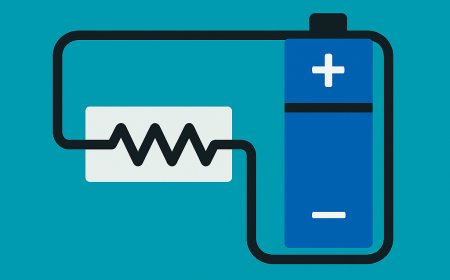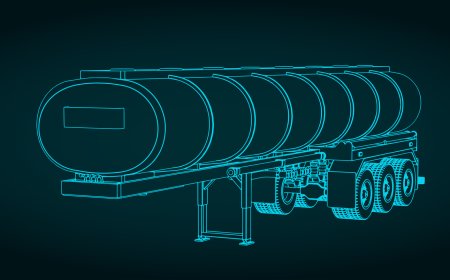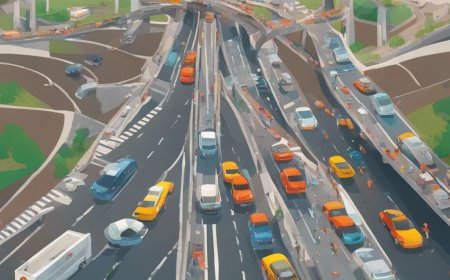Have you ever wondered what happens to liquid waves inside a tank truck while braking to avoid a car crash? This phenomenon, known as 'sloshing,' poses significant challenges and risks in the transportation of liquids. When a tank truck, filled with a fluid like diesel, makes a sudden stop or maneuver, the liquid inside doesn't just obediently settle; instead, it creates waves that can have a profound impact on the vehicle's stability and safety. Understanding this dynamic is crucial not only for truck drivers but also for the safety of all road users. In this post, we dive deep into the mechanics of liquid sloshing in tank trucks, exploring its effects during abrupt braking and how it can be a major safety concern. We also discuss innovative strategies and adjustments, ranging from vehicle design enhancements to advanced driving techniques, aimed at mitigating these risks. Join us as we explore the fascinating world of fluid dynamics in motion and the cutting-edge solutions being employed to ensure safer roads for everyone.
Sloshing
When a tank truck carrying diesel experiences sudden braking to avoid a car crash, the phenomenon of 'sloshing' occurs inside the tank. Sloshing refers to the movement of liquid inside a partially filled container (in this case, the tank of the truck) as a response to the motion of the container. Here's what happens:
-
Inertia of the Liquid: Diesel, like any other liquid, has inertia. This means it tends to continue moving in the same direction it was going before the truck starts to brake. When the truck brakes suddenly, the diesel inside wants to keep moving forward due to its inertia.
-
Sloshing Motion: As the truck decelerates rapidly, the diesel inside the tank slams against the front wall of the tank. This can cause a 'sloshing' motion, where the liquid moves back and forth or side to side within the tank. The severity of the sloshing depends on factors such as the amount of liquid in the tank, the speed of the vehicle before braking, and the abruptness of the braking.
-
Impact on Vehicle Stability: This sloshing can significantly affect the stability and handling of the vehicle. The shifting weight of the liquid can cause the truck to become unbalanced, making it harder to control, especially if the sloshing syncs up with the natural frequencies of the truck’s movement. This can lead to dangerous situations like jackknifing or rollovers, particularly in vehicles with high centers of gravity like tank trucks.
-
Design Considerations: To mitigate the effects of sloshing, tank trucks are often designed with baffles. Baffles are interior compartments or partitions within the tank that help to reduce the movement of the liquid by breaking up the space inside the tank. This helps to limit the amount of liquid that can slosh as a single mass, reducing the impact on the vehicle’s stability.
-
Driver Awareness: Truck drivers carrying liquids are generally trained to be aware of the risks of liquid sloshing. They are often advised to avoid sudden movements, such as sharp turns or abrupt braking, to minimize the risk of sloshing and maintain control of the vehicle.
How to prevent accidents caused by the sloshing of liquids?
To prevent accidents caused by the sloshing of liquids such as diesel in tank trucks, several adjustments and preventive measures can be implemented, focusing on vehicle design, driver training, and operational procedures. Here are some key strategies:
-
Use of Baffles in Tanks: As mentioned earlier, baffles are partitions within the tank that help to reduce the movement of the liquid. By breaking up the space inside the tank, baffles limit the volume of liquid that can slosh as a single mass, thereby reducing the impact on vehicle stability. This is one of the most effective ways to mitigate the risks associated with liquid movement.
-
Level of Tank Filling: Keeping the tank either completely full or at a lower level can reduce sloshing. A completely full tank leaves no room for the liquid to move, while a lower level reduces the amount of liquid that can slosh. However, this needs to be balanced with the economic and practical aspects of transportation.
-
Vehicle Speed and Braking: Educating drivers about the impact of speed and braking behavior on liquid sloshing is crucial. Drivers should be trained to maintain moderate speeds and practice gradual braking and acceleration. Sudden maneuvers, such as sharp turns or abrupt braking, should be avoided whenever possible.
-
Route Planning: Planning routes to avoid roads with sharp curves, steep inclines, or rough surfaces can minimize the need for sudden maneuvers that might cause sloshing. Using highways or roads with smoother surfaces and gentle turns can be more suitable for transporting liquids.
-
Advanced Driving Assistance Systems (ADAS): Equipping tank trucks with ADAS can help drivers maintain safe speeds, keep a safe distance from other vehicles, and provide warnings for potential hazards. Systems like Electronic Stability Control (ESC) can also help in maintaining vehicle stability.
-
Regular Maintenance: Ensuring that the vehicle, especially its braking system and suspension, is well-maintained can reduce the risk of accidents. A well-maintained vehicle is more predictable and easier to control, especially in emergency situations.
-
Vehicle Design Enhancements: Modern tank trucks can be designed with lower centers of gravity and enhanced suspension systems to improve stability. The shape of the tank and the materials used can also be optimized to minimize the effects of liquid movement.
-
Load Monitoring Technology: Implementing sensors and monitoring systems to keep track of the liquid level and movement within the tank can provide valuable information to the driver, allowing for adjustments in driving style as needed.
-
Weather and Environmental Conditions: Drivers should be aware of how weather and environmental conditions affect driving. For example, wet or icy roads require even more cautious driving to prevent accidents.
-
Emergency Response Training: Drivers should be trained in emergency response procedures in case of an accident. This includes knowing how to control the vehicle in case of a loss of stability and how to respond in the aftermath of an incident.
By combining these strategies, the risks associated with transporting liquids like diesel can be significantly reduced, enhancing road safety for both the truck drivers and other road users.
Fliud Wave.
To further prevent or minimize liquid wave motions or sloshing inside tank trucks, additional adjustments and advanced technologies can be employed. These methods focus on more sophisticated design elements and cutting-edge technologies that target the behavior of the liquid directly. Here are some of these approaches:
-
Advanced Baffle Design: Beyond traditional baffles, advanced designs can be more effective in dampening liquid movement. These may include perforated baffles, which allow some liquid flow but dampen large waves, or flexible baffles that absorb energy from the liquid movement.
-
Slosh Reduction Additives: In some cases, adding specific substances to the liquid can change its properties in a way that reduces sloshing. For example, certain polymers can increase the viscosity of the liquid, thereby dampening the waves. This, however, needs to be compatible with the liquid being transported and not affect its quality or usability.
-
Active Control Systems: These are sophisticated systems that use sensors and actuators to counteract the sloshing motion actively. Sensors detect the movement of the liquid, and actuators generate counter-movements to stabilize the liquid. This could include movable baffles or internal compartments that adjust based on the liquid's movement.
-
Shape and Construction of the Tank: The shape of the tank can significantly influence the sloshing behavior. Elliptical or streamlined tank shapes can reduce the impact of liquid movement compared to traditional cylindrical tanks. Also, constructing the tank with internal structures that disrupt wave formation can be beneficial.
-
Liquid Level Sensors and Monitoring Systems: Advanced sensors can provide real-time data on the liquid level and movement inside the tank. This information can be used to adjust driving style or for active control systems to respond appropriately to the slosh dynamics.
-
Suspension System Adjustments: Upgrading the truck's suspension system to better absorb movements and provide stability can help in reducing the effects of liquid sloshing on the overall stability of the vehicle.
-
Speed and Movement Control Systems: Implementing systems that automatically adjust the truck's speed and movement in response to the detected liquid dynamics can help in preventing situations where sloshing is likely to become problematic.
-
Driver Feedback Systems: Providing drivers with feedback on the liquid movement within the tank can help them adjust their driving in real-time to minimize sloshing. This could include visual indicators or alarms.
-
Load Distribution Optimization: Ensuring that the liquid is evenly distributed within the tank can help in minimizing sloshing. This might involve adjustments to the loading process or the use of internal compartments within the tank.
-
Research and Development in Fluid Dynamics: Ongoing research into the fluid dynamics of different liquids can lead to new insights and innovations in tank design and liquid transport strategies.
By integrating these advanced methods with traditional slosh prevention techniques, the transportation of liquids can be made safer and more efficient, reducing the risk of accidents due to liquid movement in tank trucks.











































































































